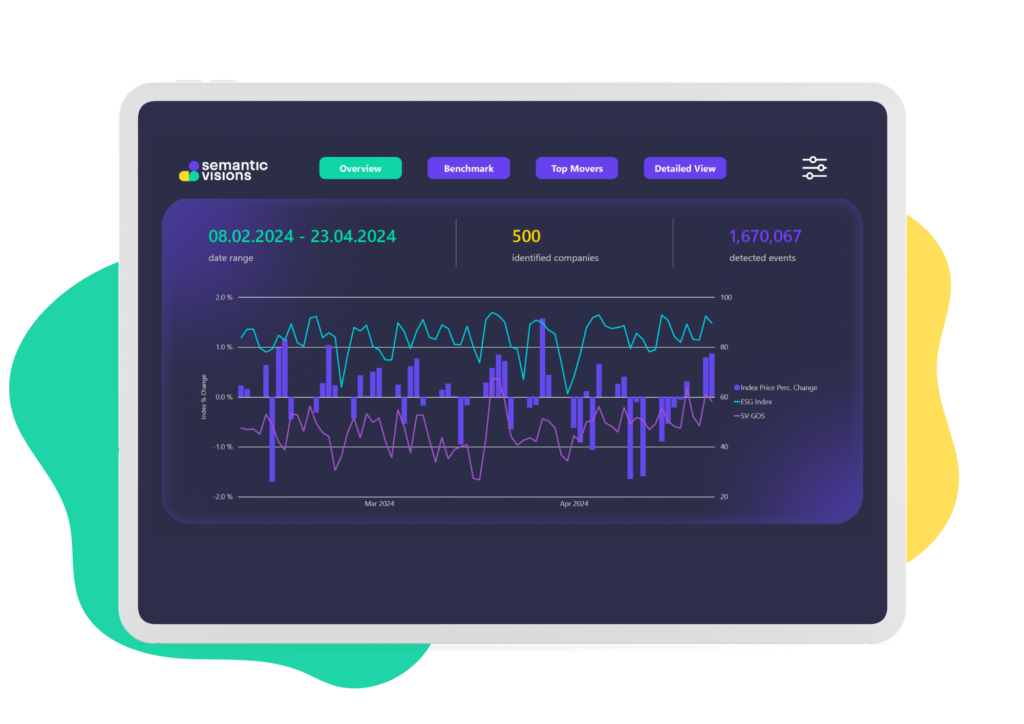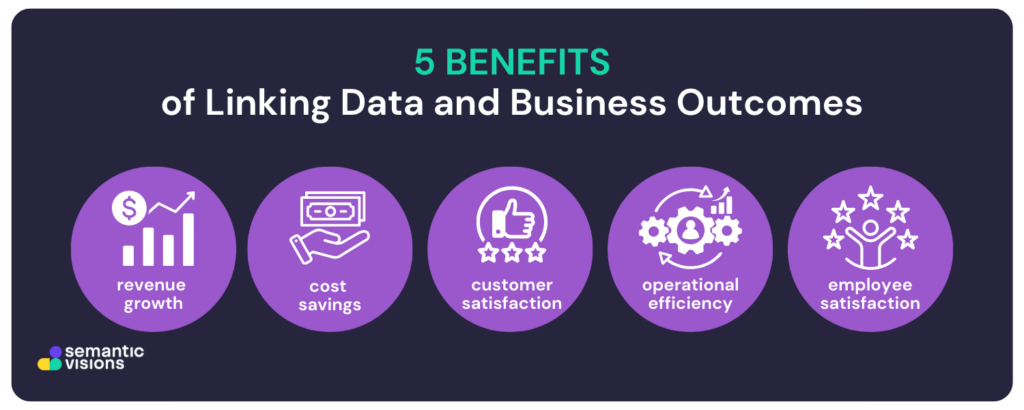4 min read
Trends in Data Analytics

In Semantic Visions, we’re witnessing trends in data analytics that underscore a focus on both business imperatives and conceptual frameworks. These trends not only reflect the evolving landscape of data-driven decision-making but also emphasize the integration of ethical considerations and environmental, social, and governance (ESG) principles. From predictive analytics to augmented analytics powered by artificial intelligence and machine learning (AI/ML), these shifts signify a strategic alignment of data analytics with new technologies, and organizational goals and values. I will address four trends that I have selected:
- The shift towards predictive analytics
- The emphasis on data governance, ethics, and ESG principles
- Augmented analytics and AI/ML integration
- Continued focus on Business Outcomes
Shift towards Predictive Analytics
While descriptive analytics focuses on defining the outcome and diagnostic analytics explains the reasoning behind why it occurred, predictive analytics forecasts the probability of an outcome occurring in the future. This trend has been around for some time and is still gaining momentum as businesses aim to anticipate market trends, customer behavior, and potential risks utilizing the latest AI-based analytical tools. Semantic Visions offers enriched data solutions for clients looking at deploying mitigation strategies to address risks across their value chains as well as hedge fund and wealth management clients in the investment space looking to improve the predictive abilities of their trading models.

Emphasis on Data Governance, Ethics, and ESG Principles
As the importance of sustainability and corporate responsibility grows, organizations are not only focusing on data privacy and security but also on integrating ESG principles into their data governance frameworks. This involves ensuring compliance with regulatory frameworks such as GDPR as well as a number of sustainability and ESG-related regulations and guidelines. Semantic Visions offers a tailored data-driven ESG solution as well as a proprietary ESG Responsibility Practices Index to support our clients’ efforts to maintain compliance while also delivering near-real time alerts related to adverse impacts on their supply chains, partners and customers.

Take a look at the sample data from the ESG live dashboard:

Augmented Analytics and Integration of AI/ML
These trends involve the fusion of machine learning, natural language processing, and other advanced techniques to automate insight generation, enhance data interpretation, and uncover hidden patterns. By enabling intuitive data interaction and automating processes, these advancements are democratizing data analysis and empowering a broader audience within organizations. Semantic Visions is at the forefront of AI implementation, particularly in the use of LLMs to enhance data enrichment activities, and offers a solution that already incorporates these features, providing businesses with a competitive edge.
Focus on Business Outcomes
Today, it is no longer sufficient to perform general data analysis; processing and interpretation of the data must be focused on a particular business case. Ultimately, the goal of data analytics is to drive better business outcomes. As such, there is a growing emphasis on tying analytics initiatives to specific business objectives and measuring their impact especially in terms of revenue growth, cost savings, customer satisfaction, operational efficiency and employee satisfaction. Semantic Visions offers these data solutions for supply chain risk, credit risk, ESG compliance, and alternative data, facilitating tailored insights to optimize business strategies and achieve measurable results.

Conclusion
Although data has long been recognized as a key factor in decision-making, the introduction of enrichment technologies and techniques means that its importance continues to grow rapidly. By embracing advanced predictive analytics, prioritizing data governance and ethics alongside ESG principles, integrating AI/ML, and focusing on tangible business outcomes, companies can realize quantifiable benefits in support of innovation, enhanced performance and growth. These trends not only reflect the evolving nature of data analytics but also underscore the importance in shaping business outcomes in an increasingly data-driven world.






